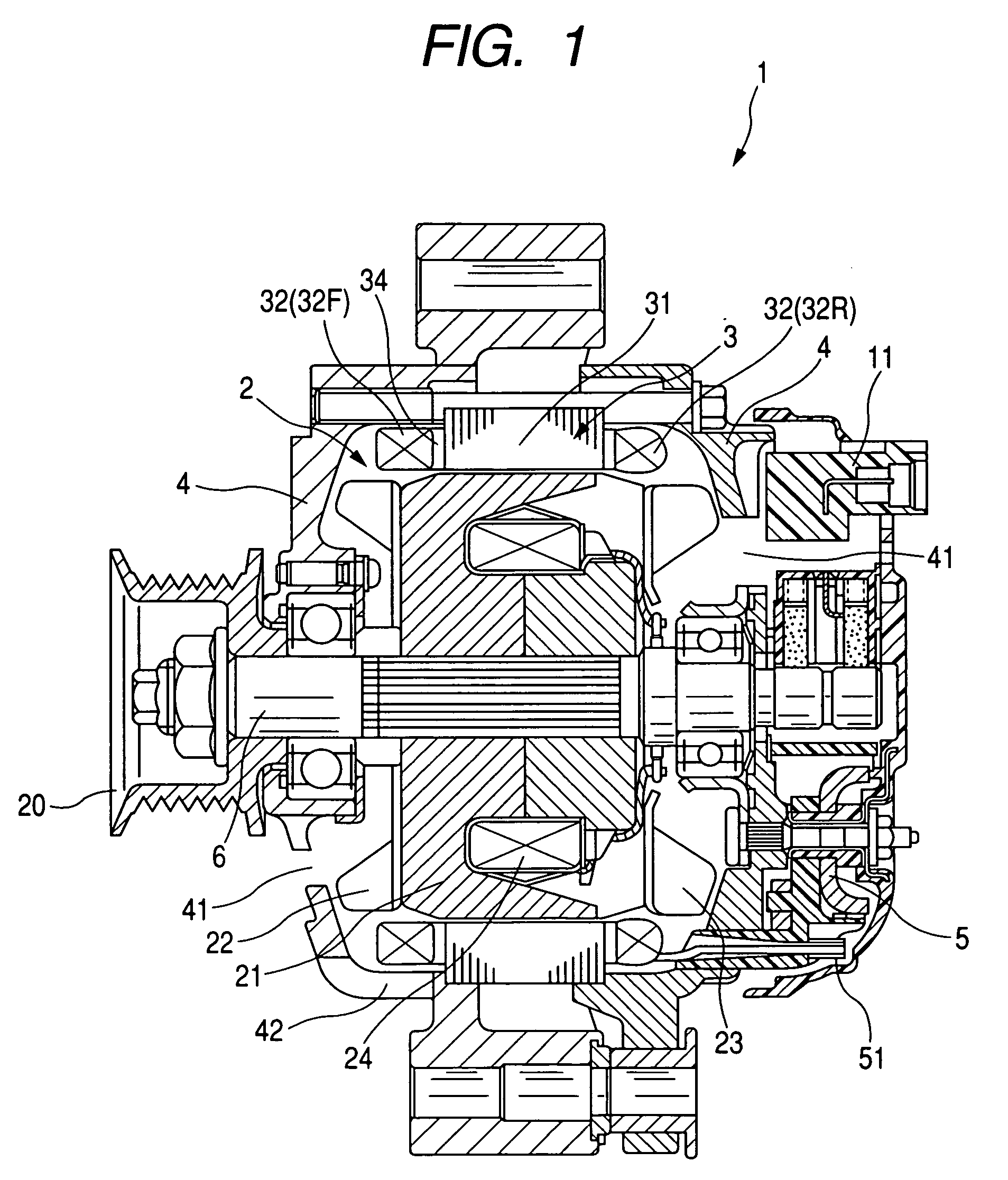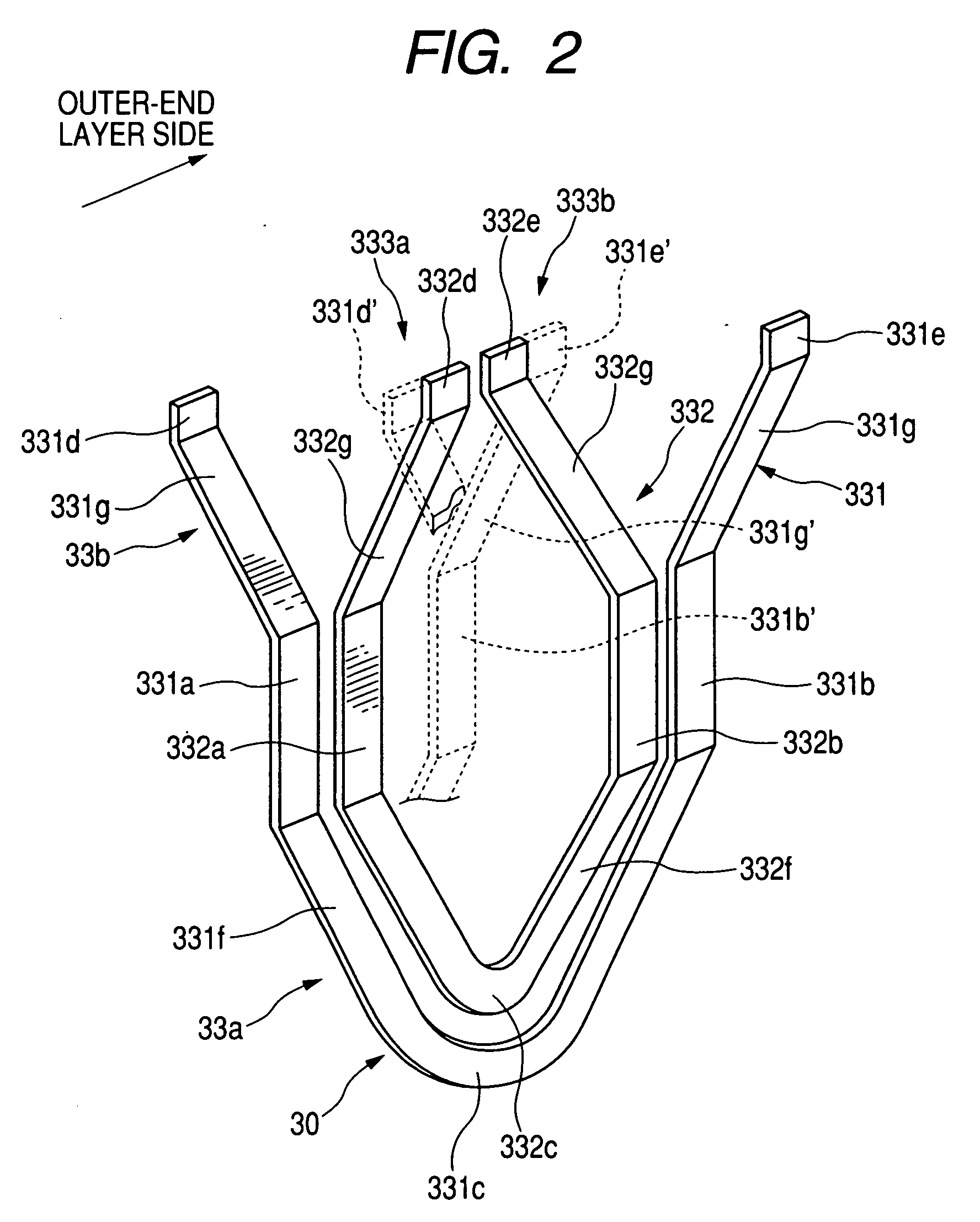Rotary electric machine for vehicles
a technology of electric machines and vehicles, applied in windings, dynamo-electric components, magnetic circuit shapes/forms/construction, etc., can solve the problems of inconvenient welding of welding techniques, difficult electrical connection between leads of stator windings and rectifiers, and inability to meet the requirements of tig welding
- Summary
- Abstract
- Description
- Claims
- Application Information
AI Technical Summary
Benefits of technology
Problems solved by technology
Method used
Image
Examples
Embodiment Construction
[0031] With reference to the accompanying drawings, hereinafter is described in detail an embodiment of a vehicular AC generator (alternator) to which the vehicular rotary electric machine according to the present invention has been applied.
[0032]FIG. 1 shows a cross section of a vehicular AC generator 1 according to an embodiment of the present invention. As shown in FIG. 1, the vehicular AC generator 1 of the present embodiment includes a rotor 2, a stator 3, a frame 4, a rectifier 5 and a regulator 11. The vehicular AC generator 1 also includes a pulley 20 for receiving torque from an engine (not shown).
[0033] The pulley 20 is fixed to a shaft 6 together with the rotor 2. The rotor 2 is provided with a pair of Lundell type iron cores 21 and a field coil 24, and rotated / driven by the engine. This Lundell type iron cores 21 are provided, at axial end faces thereof, with respective cooling fans 22 and 23. The cooling fans 22 and 23 take cooling air into the inside from an opening ...
PUM
 Login to View More
Login to View More Abstract
Description
Claims
Application Information
 Login to View More
Login to View More - R&D
- Intellectual Property
- Life Sciences
- Materials
- Tech Scout
- Unparalleled Data Quality
- Higher Quality Content
- 60% Fewer Hallucinations
Browse by: Latest US Patents, China's latest patents, Technical Efficacy Thesaurus, Application Domain, Technology Topic, Popular Technical Reports.
© 2025 PatSnap. All rights reserved.Legal|Privacy policy|Modern Slavery Act Transparency Statement|Sitemap|About US| Contact US: help@patsnap.com



